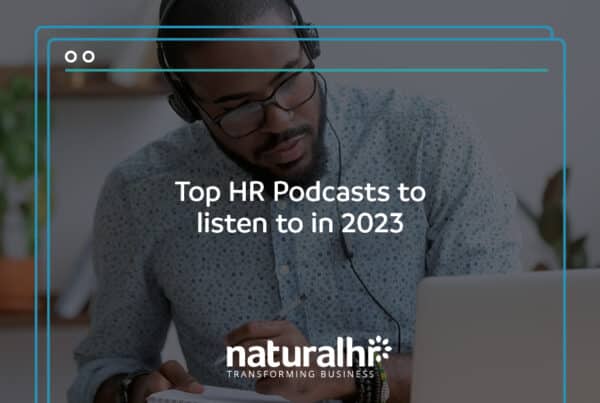How often have you sent an email to a colleague or customer only to wait and wait for a reply that never arrives?
If this is a regular occurrence in your working day, you’re doing something wrong. But you’re not alone, so don’t feel too bad – email is woefully misused and misrepresented in business, and we’re all guilty of fanning the flames at some stage.It doesn’t have to be this way
Welcome to our ultimate guide that will help you work out why people aren’t reading your emails!
1. They’re way, way too long
Back in 2013, the average attention span for adults was just eight seconds. And, in a world that is increasingly noisy and full of distractions, it’s a safe bet that number is on the decline.
So, we’re all busy and constantly distracted, therefore the last thing we need is a gigantic email to drop into our inbox. Who’s got time to read such a thing?
Email is great, because it remains one of the few methods available to us that facilitates long(ish) communications. It’s why it has, for many, completely replaced any form of snail mail (although there’s nothing wrong with sending the odd old-fashioned letter here and there) and is a viable alternative to the short, sharp and often impersonal instant messaging options.
The problem with email is when it gets too long and poorly structured. Endless paragraphs and lack of punctation simply result in a sea of words that no one in their right mind is going to read.
Keep your emails short (three or four paragraphs at the most), and pay attention to the grammar, spelling and use of punctation – it really does make a difference
2. No prior connection
Unexpected emails, no matter how legitimate, stand very little chance of being read (unless they have a particularly brilliant subject line – see no.5).
Think about the last time you received an email from a complete stranger. Did you read it or immediately assume it was spam and hit the delete key? It was the latter, wasn’t it?
Email works best as a form of follow up, so make sure you have established some form of connection with whoever it is you intend to email. That could be a phone call, face-to-face meeting or interaction on social media, but whatever it is, it should always come first before you click the ‘compose’ button.
3. You forgot to say hello (and goodbye)
If you met someone in person, you’d always start the conversation with a casual “hi!”. Likewise, on departure, a swift handshake and “take care” is rarely if ever forgotten.
Why, then, would you drop such pleasantries in the digital realm?
A likely side-effect of our reliance on instant messaging, the practice of neglecting to say “hello” or “goodbye” in email communication is as much of a turn off as it is irritating.
Always, always add the necessary pleasantries to your emails and ensure you tune them to match the audience; although you may sign-off with a “cheers” when emailing your mate, the same probably won’t be appropriate when dealing with a customer complaint.
4. It’s all about you
We’re a selfish bunch, us human beings. That means we like talking about ourselves but, equally, expect any communication sent our way to be about us and focussed on delivering an answer to a pressing question or resolution to a problem we have.
If your emails are entirely self-centred, no one will read them. If they do, they almost certainly won’t engage properly and definitely won’t feel compelled to reply. Why should they?
Email is about delivering mutual benefit, so when you next send someone a message, consider what’s in it for both of you and focus as much of the content as possible on them. Why should they read and reply? Make it clear that this communication isn’t simply a method by which to explain how wonderful you are.
5. Poor subject line
Email marketers will tell you how vital a good subject line is. So vital, in fact, that it often accounts for the lion’s share of the 80/20 rule. By spending as much time as possible on the subject line, marketers can ensure that the maximum number of recipients are tempted into opening the message rather than consigning it to the spam folder.
The same principle should be applied to business email communication. We’ve already established that we all lead very hectic, busy lives, and to cut through the noise, your email needs to stand up tall and look rather different to the myriad of other messages in the recipient’s inbox.
Keep it short, avoid anything that looks ‘spammy’ and add a sense of urgency. The latter can be achieved with a cliffhanger which, if you want to discuss a recently sent proposal, might read “Let’s chat through page 4 on the proposal!”.
The above example also tempts the recipient to take action. Already curious, they’ll likely delve back into the proposal and, consequently, back into your world. They may not even read the email itself and instead pick up the phone to discuss further, neatly illustrating just how important that subject line is!
6. No credibility
With personal emails, you can get away with the simplest of sign-offs, because there’s a good chance the recipient knows who you are, but in business, you need to exude credibility if people are to trust you and read the email.
This means your name and company name should be highly visible in the ‘From’ field, and the footer contain the necessary elements that prove you are who you say you are.
The company logo, strap line, social media links, privacy statement and your job title will go an awfully long way to adding credibility to your message, and you only have to create that section of the email once, so don’t neglect this vital stage.
7. You should have used a different form of communication
One of the biggest problems with email is that it is often used when another form of communication would have been more appropriate.
We’ve all experienced this: you spend twenty minutes constructing an email, all the while knowing that something isn’t quite right. You have this niggling feeling that you’re doing something wrong. The message is taking far too long to write and you’re having to constantly reword sentences.
Then, it hits you (usually after you’ve pressed ‘send’): this should have been a phone call. Whoops.
The next time you have even the smallest, niggling of doubts that email communication isn’t the best route forward, pull out before you so much as type a single word and try something else instead. Email should only be used when appropriate, and in a world full of multiple, fast communication channels, that means relatively infrequently.
Final thoughts
Email doesn’t deserve the countless bad vibes that are sent its way – it just needs to be used correctly. As you’ll have noted in this post, the methods needed to ensure your emails get read are pretty straightforward and rely on one thing: common sense.
If there’s one takeaway today, it’s this: email isn’t and has never been a method by which to grab someone’s attention. If something is urgent and needs communicating quickly, use the phone or instant messaging. Email is at its best when employed infrequently and in a format that treats the reader with respect.
Image Credit: https://pixabay.com/en/spam-mail-email-mailbox-garbage-964521/





